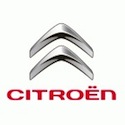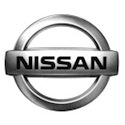Tesla Model S
It's been a long time coming and so far, it's still not arrived but when it does - perhaps early next year - the Model S electric saloon car from Tesla looks set to inject a major dose of style, sports, speed and seating into a curious crossover market niche. So far, still being marketed as a seven-seater, the Model S leverages the efficiency, environmental, packaging and style benefits made possible by designing an all-electric car from the ground up to maximise the possibilities available in the ever-expanding world of green motoring.
What's more, the Telsa Model S electric 7-Seater is likely to offer a unique combination of refinement and environmental responsibility with luxury style and performance befitting the finest automobiles from some of the world's oldest makers of upmarket motoring platforms built on engineering practices that, as evolved or even cutting-edge as they may be beginning to look, are quite frankly, rather old hat.
There are no real details yet regarding exactly how Tesla is going to fit seven seats into the low and very swoopy body of the Model S. A Model S, in bright-red hand-built prototype show-car form, has been visiting public and private events across North America with increasing frequency since 2009 in order to showcase the advanced engineering and impressive styling of what could be a significant entrant into the continent's sedan market when it finally goes into production.

Telsa Model S (Potential 7-Seater) pictured above
Though the exact seating arrangements of the final production model are yet to be detailed by Tesla, the Model S that has been showcased in public presents some impressive evidence of what the company has managed to perform by engineering the car from the ground-up to make the greatest use of all possibilities presented by the car's unique design.
The biggest single component driving the Model S format is likely to be the electric drive unit integrated into the rear axle. As a result of not simply plonking an electric motor into an engine bay that would traditionally be home to an internal combustion engine, Tesla has been able to consider a range of radical design and packaging options.
The Model S also uses a very slim and perfectly-flat battery pack that further allows the car's designers to maximise the vehicle's engineering around a roomy passenger cabin, a suspension focused on refined sporting road manners, and the ability to offer storage volumes unheard of in a vehicle of this size and style.
Not only is the battery pack designed to fit out of the way in the floor, where it can't intrude on the room needed for passengers, engineers used the battery pack to further boost the ability of the chassis to resist twisting (torsional rigidity), further improving the car's ride, handling, low noise levels and safety.
Yet another great benefit is provided by Tesla's battery-pack design. The company will be offering a choice of three different battery packs with the Model S. Offering ranges of 160 miles, 230 miles or 300 miles, the special battery packs can easily be changed. Charging takes just 45 minutes.
Despite the Model S having four doors and room for seven people, it is likely to provide stunning performance. Thanks to its high-tech design and construction, as well as the massive torque available from the carefully-engineered electric motor, the Model S is likely to make the 0-60mph dash in less than six seconds.

 Audi 7-Seater
Audi 7-Seater BMW 7‐Seaters
BMW 7‐Seaters Chevrolet MPVs
Chevrolet MPVs Chrysler MPVs
Chrysler MPVs Citroen MPVs
Citroen MPVs Fiat 7-Seaters
Fiat 7-Seaters Ford 7-Seaters
Ford 7-Seaters Honda MPVs
Honda MPVs Hyundai MPVs
Hyundai MPVs Jeep 7-Seaters
Jeep 7-Seaters Kia 7-Seaters
Kia 7-Seaters Land Rover
Land Rover Mazda MPVs
Mazda MPVs Mercedes MPVs
Mercedes MPVs Mitsubishi
Mitsubishi Nissan
Nissan  Peugeot
Peugeot  Renault
Renault  SEAT 7‐Seaters
SEAT 7‐Seaters Ssangyong
Ssangyong  Toyota
Toyota  Vauxhall MPVs
Vauxhall MPVs Volkswagen
Volkswagen Volvo MPV
Volvo MPV All Manufacturers
All Manufacturers